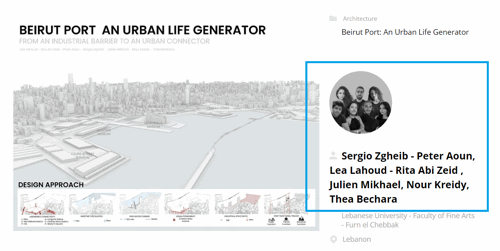Resonant Realms Can architecture transcend the temporal axes of music and nature to resonate as a phantasmal symphony?

Project idea
Project idea (purpose and goal)
1. Background and context
Modern urban spaces are becoming more and more uniform and fixed as a result of prioritizing efficiency and commercialization. On the other hand, diverse values and lifestyles are now being recognized, and people are seeking flexible spaces that correspond to them.
Furthermore, fluid elements such as the natural environment (light, wind, sound) and people's activities change from moment to moment, but it has been considered difficult to fully incorporate these changes into spatial design.
2. Core idea
This project aims to incorporate musical elements such as "rhythm," "modulation," and "inflection" into architecture. Specifically, by reflecting environmental elements such as natural light, wind, sound, and changes in traffic flow in the design using "musical techniques," we provide a constantly changing spatial experience.
3. Purpose
Creating a space that accepts diverse values and emotions
We will create a space where users can choose different experiences for themselves depending on their mood and feelings on that day.
Incorporate fluid environmental elements into the design
The quality of the space changes flexibly through changes in light, wind, sound, etc., giving users a new sensation.
4. Goals to achieve
Design fluid spaces within the city
In contrast to the current fixed urban space, provide a spatial experience that is integrated with the natural environment and changes over time.
Apply musical concepts to architecture
By incorporating musical elements (rhythm, modulation, intonation, etc.) into the materials, structure, traffic flow, and spatial presentation, we aim to create a sensory-rich space.
This will allow users to find a place in the city that brings out new emotions and sensations in their daily lives.
Project description
1. Creating a dynamic space mediated by environmental elements
By incorporating environmental elements such as natural light, wind, sound, and people's movements into the design, the space is not fixed, but rather provides an experience that is constantly changing.
The quality of the space changes with the change in light and wind depending on the season and time of day, allowing users to experience different sensations and emotions.
2. Applying musical elements to spatial design
Musical concepts such as musical rhythm, modulation, staccato, chords, and tension are reflected in the architectural prototype.
This creates a space that visually and physically has intonation and tempo, creating a place where users can feel emotional changes.
3. A space that embraces diverse values and emotions
Provides a place in the city that is in tune with ever-changing values and diverse emotions.
The design allows the space to meet diverse needs, allowing each user to enjoy a different experience that matches their mood and sensibility on that day.
This project proposes **"varied spaces," "musical sensibility," and "resonance with the environment"** as solutions to the uniformity of urban spaces caused by commercialization.
Technical information
1. Environmental control technology (management of light, wind, and sound)
Control of natural light
Analyze how light enters depending on the time of day and season, and adjust the openings and reflective surfaces to manipulate the quality and intensity of light.
Create a "modulation" effect by utilizing light diffusion and spotlight effects.
Wind flow design
Ensure multiple ventilation paths so that wind flows irregularly within the space. Use the temperature and air movement caused by the wind to change the experience.
Acoustic effect design
Use materials that reflect and absorb sound (wood, metal, stone, etc.) in each area to adjust the intonation of the sound within the space.
Design a mechanism for footsteps and environmental sounds to resonate between multiple floors.
2. Spatial structure and traffic flow design
Design for unstable footholds and changing heights
Add rhythm to the visual and walking experience by using steps, slopes, and stairs.
The complexity of traffic flow increases options, and the design weaves together the experience as if the user is "composing" the space.
Design for different experiences on each floor
Low floors: A dynamic space that reflects the vitality of the city.
Mid-floor area: A space where city and nature intersect, and where light, wind, and sound intertwine in a complex way.
High-floor area: A meditative space where you can feel silence and nature.
3. Materials and Finishes
Combination of different materials
Wood, metal, glass, etc. are combined in layers to create spatial "chords" and "tones."
Sound-absorbing materials and hard finishing materials are used in different areas to design the spread and convergence of sound.
Introduction of variable elements
Moveable fixtures and louvers dynamically change the path of light and wind.
Some of the flooring is designed to sway, spreading the acoustic effect throughout the space.
4. Systems and digital management
Management and control of environmental data
Sensors are used to monitor and control the conditions of light, wind, temperature, and sound in real time.
Dynamic lighting and ventilation systems are adjusted according to environmental data.
These technical specifications allow the space to change sensorily and dynamically, providing users with a musical experience.






